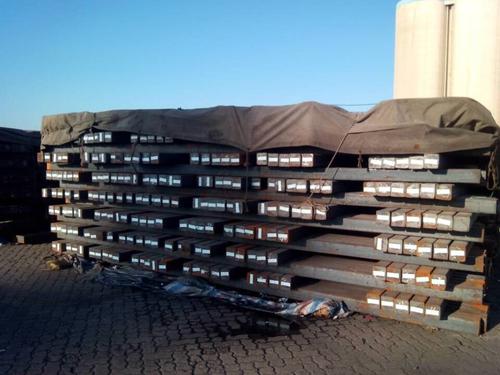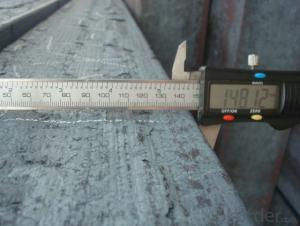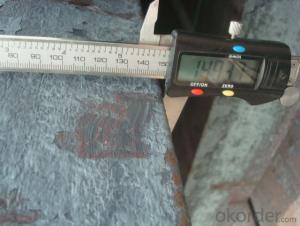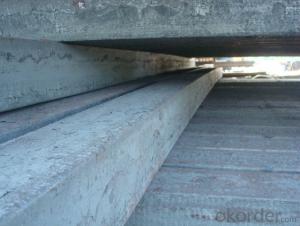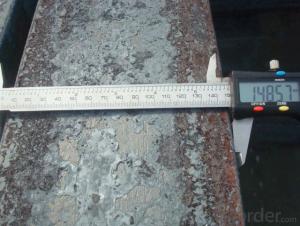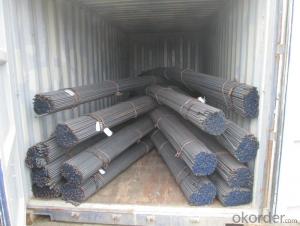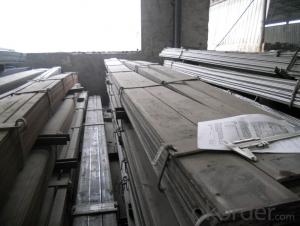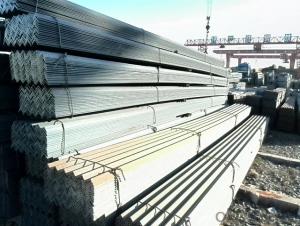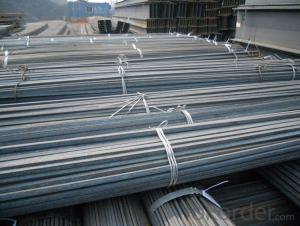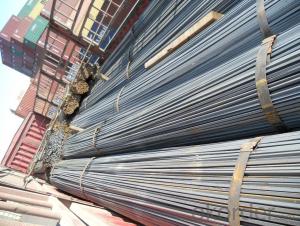Hot Roll Square Steel Bar with Grade Q195 / Q235
- Loading Port:
- Tianjin
- Payment Terms:
- TT or LC
- Min Order Qty:
- 5000 m.t.
- Supply Capability:
- 100000 m.t./month
OKorder Service Pledge
OKorder Financial Service
You Might Also Like
Product Description:
OKorder is offering Hot Roll Square Steel Bar with Grade Q195 / Q235 at great prices with worldwide shipping. Our supplier is a world-class manufacturer of steel, with our products utilized the world over. OKorder annually supplies products to European, North American and Asian markets. We provide quotations within 24 hours of receiving an inquiry and guarantee competitive prices.
Product Applications:
Hot Roll Square Steel Bar with Grade Q195 / Q235 are ideal for structural applications and are widely used in the construction of buildings and bridges, and the manufacturing, petrochemical, and transportation industries.
Product Advantages:
OKorder's Hot Roll Square Steel Bar with Grade Q195 / Q235 are durable, strong, and resist corrosion.
Main Product Features:
· Premium quality
· Prompt delivery & seaworthy packing (30 days after receiving deposit)
· Corrosion resistance
· Can be recycled and reused
· Mill test certification
· Professional Service
· Competitive pricing
Product Specifications:
We offer Square Steel Bar with grade Q195 / Q235
Specifications of Square Steel Bar:
-Standard: GB,
-Grade: Q195/Q235 or equivalent.
Chemical Composition:
-Chemical Composition. Q195
Standard | Grade | Element (%) | ||||
GB | Q195 | C | Mn | S | P | Si |
0.06~0.12 | 0.25~0.50 | ≤0.050 | ≤0.045 | ≤0.30 | ||
-Chemical Composition. Q235
Standard | Grade | Element (%) | ||||
GB | Q235B | C | Mn | S | P | Si |
0.12~0.20 | 0.30~0.70 | ≤0.045 | ≤0.045 | ≤0.30 | ||
Measures and Tolerances of Square Steel Bar:
(The section of Square Steel Bar)
The length of a side and the theoretical weight of Square Steel.
Length of a side(a, mm) | Theoretical weight(kg/m) | Length of a side(a, mm) | Theoretical weight(kg/m) |
6 | 0.283 | 32 | 8.04 |
7 | 0.385 | *33 | 8.55 |
8 | 0.502 | 34 | 9.07 |
9 | 0.636 | *35 | 9.62 |
10 | 0.785 | 36 | 10.17 |
11 | 0.950 | 38 | 11.24 |
12 | 1.13 | 40 | 12.56 |
13 | 1.33 | 42 | 13.85 |
14 | 1.54 | 45 | 15.90 |
15 | 1.77 | 48 | 18.09 |
16 | 2.01 | 50 | 19.63 |
17 | 2.27 | 53 | 22.05 |
18 | 2.54 | *55 | 23.6 |
19 | 2.82 | 56 | 24.61 |
20 | 3.14 | *58 | 26.4 |
21 | 3.46 | 60 | 28.26 |
22 | 3.80 | 63 | 31.16 |
*23 | 4.15 | *65 | 33.17 |
24 | 4.52 | *68 | 36.3 |
25 | 4.91 | 79 | 38.49 |
26 | 5.30 | 75 | 44.16 |
*27 | 5.72 | 80 | 50.24 |
28 | 6.15 | 85 | 56.72 |
*29 | 6.60 | 90 | 63.59 |
30 | 7.06 | 95 | 70.85 |
*31 | 7.54 | 100 | 78.50 |
Notes:
1, The theoretical weights in the list, base on the density of 7.85 g/cm3.
2, The numbers with *mean that they are not regulars or we don’t offer them
-The allowed tolerance of Square Steel:
Length of a side(mm) | Allowed Tolerance | ||
Group1 | Group2 | Group3 | |
5.5~7 | ±0.20 | ±0.30 | ±0.40 |
7~20 | ±0.25 | ±0.35 | ±0.40 |
20~30 | ±0.30 | ±0.40 | ±0.50 |
30~50 | ±0.40 | ±0.50 | ±0.60 |
60~80 | ±0.60 | ±0.70 | ±0.80 |
80~110 | ±0.90 | ±1.0 | ±1.1 |
110~150 | ±1.2 | ±1.3 | ±1.1 |
150~190 | ―― | ―― | ±2.0 |
190~250 | ―― | ―― | ±2.5 |
Usage/Applications of Steel Square Bar:
-The Square Steel is normally used as structure steel.
-Row material for other structure steel like steel angles, channels, I-beams, H-beams, etc
Packaging & Delivery of Steel Square Bar:
-Packing Detail: The products can be packed in bundles by steel wires.
-Marks:
1, Tag marks: the tag marks will be tied up to each bundle of the products. The information is usually including supplier’s logo and name, product name, made in China, products’ specifications, the painted color and other information requested by customers.
2, Color marks: we will paint both ends of the bundles of these products to make sure that they are more evident. It’s will be more convenient for the customers to distinguish them at the destination port.
-Delivery Detail: 30~45 working days after receive buyer’s T.T. or L/C.
Transportation:
-The products can be delivered by bulk vessel or by container. As for container, products with the length of 6m will be loaded in 20’ container, with 9m or 12m, in 40’ container.
-The maximum quantity of loading of container is 25 tons.
-The products usually are transported to the nearest port from the production place.
Payment:
-Invoicing on theoretical weight or actual weight a s customer’s request.
-FOB, CFR or CIF.
-Regular terms of payment:
1, 30% payment in advance, the remaining balance (70% payment) against the copy of B/L.
2, 30% payment in advance, the remaining balance (70% L/C) against the copy of B/L.
3, Negotiable.
FAQ:
Q1: Why buy Materials & Equipment from OKorder.com?
A1: All products offered byOKorder.com are carefully selected from China's most reliable manufacturing enterprises. Through its ISO certifications, OKorder.com adheres to the highest standards and a commitment to supply chain safety and customer satisfaction.
Q2: How do we guarantee the quality of our products?
A2: We have established an advanced quality management system which conducts strict quality tests at every step, from raw materials to the final product. At the same time, we provide extensive follow-up service assurances as required.
Q3: How soon can we receive the product after purchase?
A3: Within three days of placing an order, we will begin production. The specific shipping date is dependent upon international and government factors, but is typically 7 to 10 workdays.
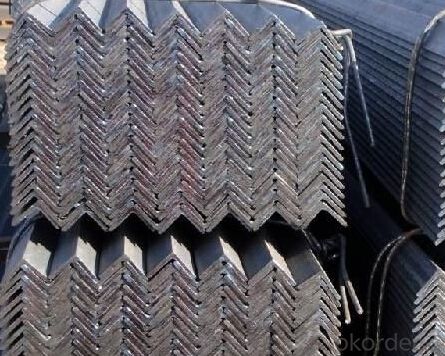
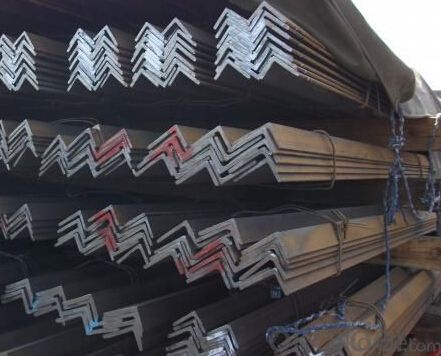
- Q: How do steel billets contribute to the manufacturing of construction equipment?
- The manufacturing of construction equipment heavily relies on steel billets, which are semi-finished steel products shaped and sized through casting. These billets, usually rectangular or square, serve as the initial stage for further processing. An important aspect of steel billets in construction equipment manufacturing is their provision of high-quality raw material. Steel is renowned for its exceptional strength, durability, and resistance to various environmental factors. By incorporating steel billets, manufacturers can guarantee that the construction equipment they produce can withstand the demanding conditions and heavy loads often encountered in the construction industry. Additionally, steel billets are utilized in the production of various construction equipment components, including frames, beams, brackets, and other structural elements. By utilizing steel billets, manufacturers can easily mold and shape these components to meet specific design requirements. This adaptability enables the creation of equipment that is not only robust and long-lasting but also lightweight and efficient. Moreover, the use of steel billets in construction equipment manufacturing is driven by their cost-effectiveness. Steel is a highly recyclable material, allowing for multiple reuses and repurposing without compromising its properties. This renders steel billets a sustainable and environmentally friendly choice for manufacturers. In conclusion, steel billets are an indispensable element in the manufacturing of construction equipment. They provide a high-quality raw material that possesses strength, durability, and resistance to environmental factors. Steel billets also facilitate the production of customized components that meet specific design requirements. Furthermore, their cost-effectiveness and recyclability make them a sustainable choice for manufacturers. Overall, steel billets significantly contribute to the production of construction equipment, ensuring adherence to the highest standards of quality and performance.
- Q: How are steel billets used in the production of electrical appliances?
- Steel billets are used in the production of electrical appliances as a raw material that is shaped and formed into various components such as casings, frames, brackets, and other structural parts. These billets are melted, cast, and rolled into the desired shape and size, providing the necessary strength, stability, and durability required for electrical appliances.
- Q: How do steel billet prices fluctuate in the market?
- The market for steel billets experiences fluctuations in prices due to various factors. One of the primary factors is the demand and supply dynamics within the steel industry. When there is a high demand for steel billets, suppliers can increase prices as they have more leverage. Conversely, when there is low demand, suppliers may lower prices to compete for a smaller pool of buyers. The cost of raw materials is another significant factor impacting steel billet prices. Steel production relies on iron ore, coal, and scrap metal, and any changes in the prices of these materials directly affect the cost of producing steel billets. For instance, if there is a shortage of iron ore, the production costs rise, leading to an increase in the price of steel billets. Furthermore, market conditions and economic factors also influence steel billet prices. Inflation, interest rates, and currency exchange rates can affect the overall production and transportation costs, thereby influencing the prices of steel billets. Moreover, geopolitical events and trade policies can cause price fluctuations. Tariffs, trade disputes, or changes in import/export regulations can disrupt the supply chain, impacting the prices of steel billets. In conclusion, the prices of steel billets are influenced by a complex interplay of factors, including demand and supply dynamics, raw material costs, market conditions, and geopolitical events. Traders, manufacturers, and investors closely monitor these factors to predict and respond to price fluctuations in the steel billet market.
- Q: What are the different surface treatments for improved surface cleanliness in steel billets?
- There are several surface treatments available for improving surface cleanliness in steel billets, including shot blasting, pickling, acid cleaning, and electrochemical cleaning. Shot blasting involves propelling abrasive particles onto the surface to remove scale, rust, and contaminants. Pickling involves immersing the billets in an acid solution to dissolve oxides and surface impurities. Acid cleaning uses chemical solutions to remove surface contaminants and oxides. Electrochemical cleaning utilizes an electric current to remove oxides and impurities from the surface. These treatments help ensure better surface cleanliness and prepare the steel billets for further processing or applications.
- Q: What is the role of steel billets in the manufacturing of cutting tools?
- The manufacturing of cutting tools heavily relies on steel billets. These billets act as the primary material from which the cutting tool is forged or machined. Typically, steel billets are composed of high-quality steel alloys, which possess vital properties like hardness, toughness, and wear resistance that are necessary for cutting tools. To initiate the manufacturing process, the steel billets are heated to a specific temperature called the forging temperature. This temperature allows the steel to become malleable, making it easier to shape and mold into the desired cutting tool. The heated billets are then subjected to a forging process using specialized equipment, where they are struck or pressed to shape them into the desired form, such as drills, saws, or blades. Following the initial forging, the billets undergo further machining to refine their shape and dimensions. Machining processes like milling, turning, and grinding are employed to eliminate excess material, achieve precise dimensions required for the cutting tool, and create the desired cutting edge geometry. The quality of the steel billets used in the manufacturing process significantly impacts the performance and durability of the cutting tool. Steel billets with high carbon content and alloying elements like chromium, vanadium, or tungsten are often preferred as they enhance the hardness, strength, and wear resistance of the cutting tool. These properties are essential to ensure that the cutting tool can withstand the high forces, temperatures, and abrasive conditions it will encounter during use. In conclusion, steel billets serve as the foundation for manufacturing cutting tools. They provide the necessary raw material and properties required to create high-quality cutting tools that demonstrate exceptional performance, durability, and precision.
- Q: What are the different types of defects in steel billets?
- There are several types of defects that can occur in steel billets, including surface defects such as cracks, scabs, and laps, as well as internal defects like inclusions, segregation, and shrinkage cavities. These defects can affect the quality and performance of the steel and may require remedial measures or rejection of the billets.
- Q: What is the average weight of a steel billet?
- The average weight of a steel billet varies depending on its dimensions and specific grade. However, a typical range for the average weight of a steel billet is between 1,000 and 5,000 pounds.
- Q: Our caster is square billet! 150X500! That is, every time we open the head, there is slag inclusion. And pores! Yes, the first 3 meters! There's no more left behind! How did it happen, please?! We have a refinery and electromagnetic stirring! Give me a hand!
- In the production process of steel castings, the appearance of quality defects is unavoidable. It is essential to take reasonable measures to avoid the inclusion of slag in the cast steel. It is necessary to understand the reason why the porosity of the cast steel is caused by slag inclusion so that the quality of the cast steel can be improved.In order to solve the pinhole of slag phenomenon, the first thing to do is to understand the cause of steel casting porosity slag phenomenon, and take corresponding measures according to the original material,
- Q: What are the market trends and growth prospects for steel billets?
- Steel billets are a crucial component of the steel industry, serving as the raw material for various downstream applications. The market trends and growth prospects for steel billets are largely influenced by factors such as global economic growth, infrastructure development, and the demand for steel in various sectors. One of the significant market trends for steel billets is the increasing demand from the construction industry. With rapid urbanization and infrastructure development in emerging economies, the need for steel-intensive construction projects is rising. Steel billets are widely used in the construction of bridges, buildings, and other infrastructure projects, driving the demand for this product. Another market trend is the growing demand for steel billets in the automotive industry. The automotive sector is a major consumer of steel, and as the industry shifts towards lightweight and high-strength materials, the demand for steel billets is expected to grow. Steel billets are used in the production of various automotive components, including engine parts, chassis, and suspension systems. Furthermore, the increasing focus on renewable energy sources, such as wind and solar power, is expected to drive the demand for steel billets. Wind turbines and solar panel structures require steel components, and as renewable energy projects continue to expand globally, the demand for steel billets is likely to witness significant growth. In terms of growth prospects, the steel billets market is expected to experience steady growth in the coming years. The Asia-Pacific region, particularly China and India, is expected to dominate the market due to their robust construction and infrastructure sectors. These countries have massive urbanization projects and ongoing infrastructure development plans, which will drive the demand for steel billets. Additionally, the recovery of the global economy after the COVID-19 pandemic is expected to boost the demand for steel billets. As economies rebound and industrial activities pick up pace, the demand for steel in various sectors, including construction, automotive, and energy, will increase, positively impacting the market for steel billets. However, it is important to note that market trends and growth prospects for steel billets can be influenced by factors such as fluctuations in raw material prices, trade policies, and environmental regulations. Moreover, the increasing adoption of alternative materials, such as aluminum and composites, in certain applications may pose a challenge to the growth of the steel billets market. In conclusion, the market trends for steel billets are driven by the demand from the construction, automotive, and renewable energy sectors. The growth prospects for this market are promising, particularly in the Asia-Pacific region, as economies recover from the pandemic and infrastructure projects gain momentum. However, challenges such as raw material price fluctuations and competition from alternative materials should also be considered.
- Q: How do steel billets come out?
- Three, steel rolling:Rolling steel or continuous casting billet into various steels by rolling mill
Send your message to us
Hot Roll Square Steel Bar with Grade Q195 / Q235
- Loading Port:
- Tianjin
- Payment Terms:
- TT or LC
- Min Order Qty:
- 5000 m.t.
- Supply Capability:
- 100000 m.t./month
OKorder Service Pledge
OKorder Financial Service
Similar products
Hot products
Hot Searches
Related keywords





